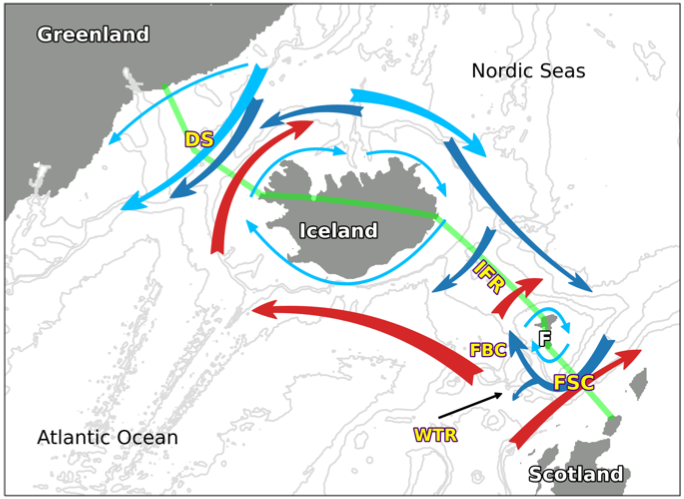Associate Research Scientist and group member Renske Gelderloos has been awarded a new grant from the NSF Physical Oceanography program. Renske’s project is on “Subinertial variability across and around the Greenland-Scotland Ridge and its impacts on the ocean circulation.” Congratulations Renske!
Overview: The Greenland-Scotland Ridge (GSR) is a shallow topographic ridge between Greenland and Scotland, where northward-flowing warm and saline surface currents meet southward-flowing dense overflows and Arctic outflows. Time series from current meters show that much of the variability in these flows occurs at subinertial frequencies (with periods of days to tens of days). The project will quantify the relative importance of subinertial variability compared to the time-average flow for all currents in the GSR area in a series of high-resolution realistic numerical model simulations. It will reveal the spatial structures associated with this subinertial variability. Furthermore, this project will quantify the impact of subinertial variability on (1) Cross-ridge volume transports to and from the deep ocean basins on either side of the GSR, (2) Cross-frontal water mass exchange, and (3) Cross-shelfbreak volume transport on and off the shallow continental shelves. Finally, this project will identify hot spots of subinertial variability that are important for the time-average circulation in the simulations, such as locations of subinertial dense overflows, and recommend field work to search for the hot spots in the real ocean.

